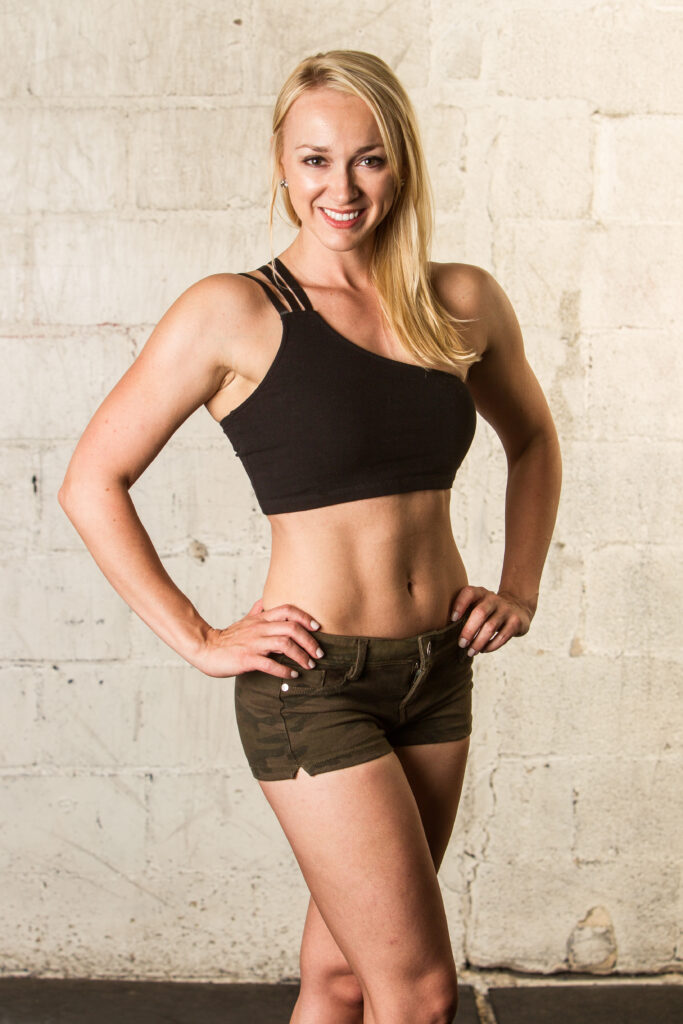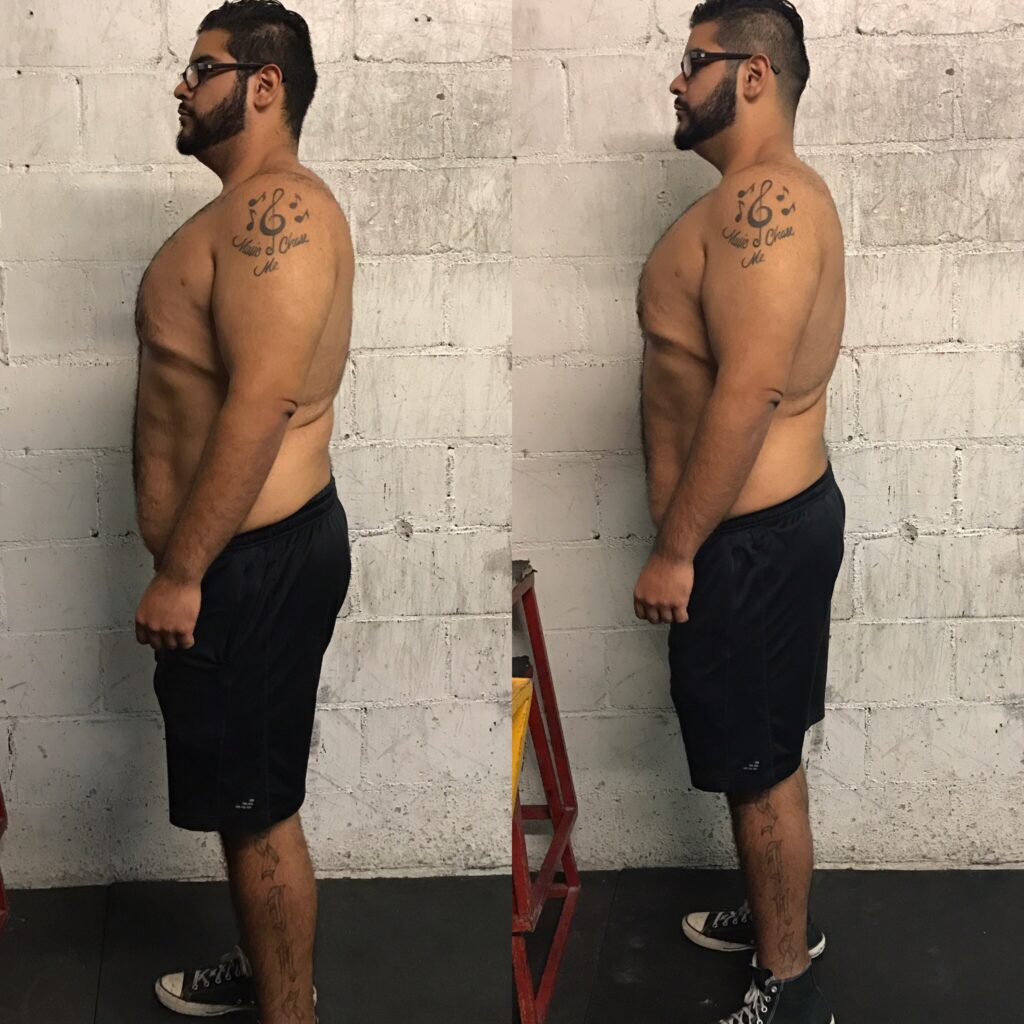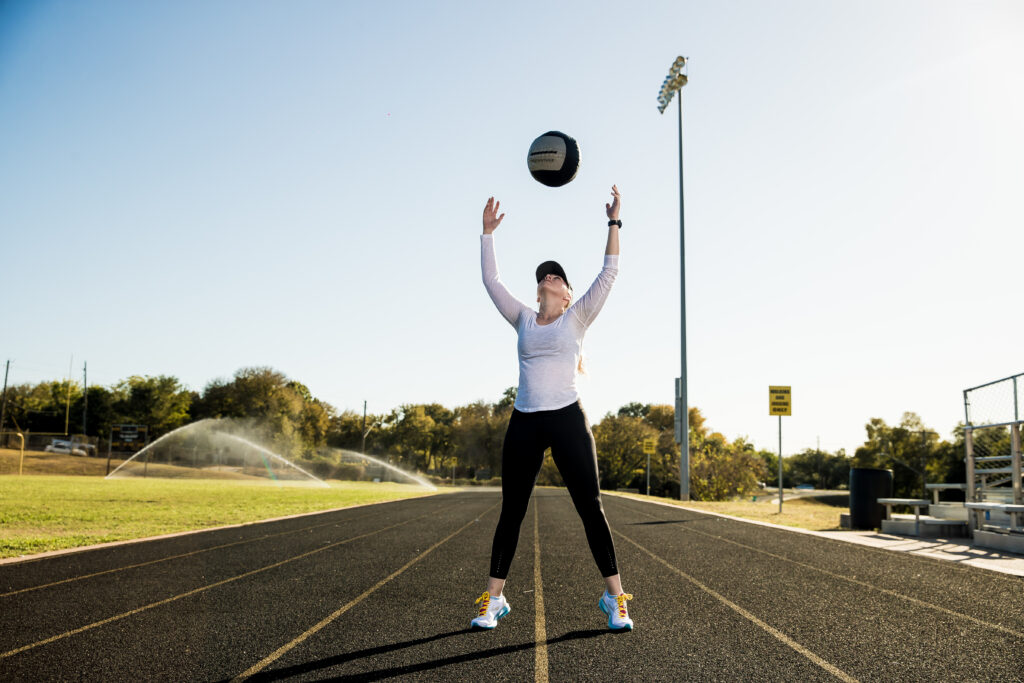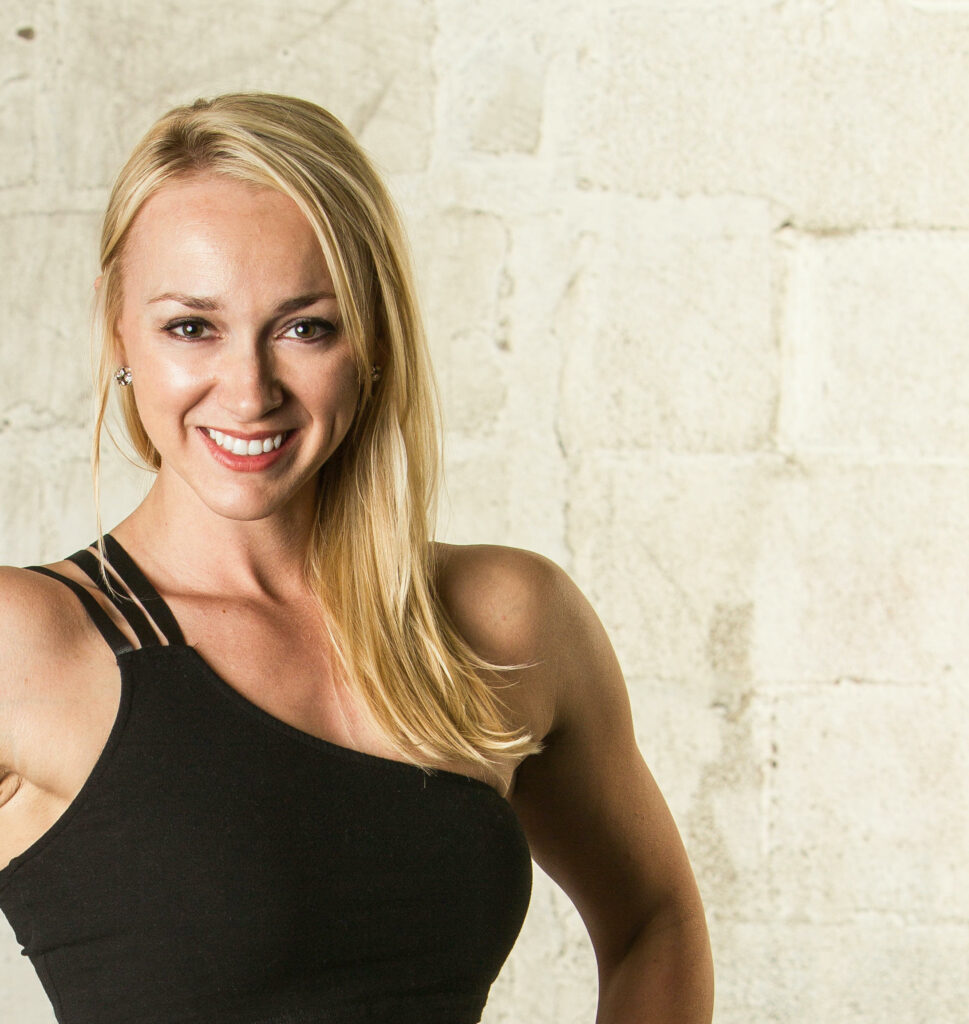Aiming for a 1 month body transformation is a pretty aggressive, big goal. I encourage all my clients to think of exercising as something you’ll do forever. Like, for-ev-verrrr. Most often, when my clients are stuck and aren’t seeing the progress they want, the answer is to just keep going. Keep working hard, for more weeks and months.
However, I understand the desire to want a lot of progress quickly. Getting noticeable results quickly can even jump-start your motivation and desire to commit to your exercise routine. Who wouldn’t want to see muscle growth, weight loss, increased energy level and health changes in a month?

But again: a month is quick! To make the most significant body transformation in one month, you’ll need a focused and intense approach that combines optimal training, nutrition, and recovery strategies. Here’s a detailed plan to achieve this.
Set Actionable Goals (Procedural Goals)
Many fitness articles will tell you to set outcome goals, such as “I will lose 10 pounds this month” or “I will decrease my body fat by 3%”.
I really dislike these.
I encourage you to set procedural goals instead of outcome goals. What is the difference? Procedural goals focus on the specific steps or procedures required to achieve an objective. They are what you do.
Outcome goals focus on the end result or the final achievement that you are aiming for.
Note: you can have outcome goals, of course. I want you to more heavily weigh the procedural goals, because remember, the procedural goals are the ones that will get you to the outcome. Do the procedural goals and you’ll get there!
Procedural Goals
Procedural goals focus on the methods, steps, and processes that you will follow. Success with procedural goals is measured by adherence to the process and steps. This involves following short-term, daily, or weekly tasks.
Outcome Goals
Outcome goals focus on the end result, emphasizing only the outcome. Outcome goals are often not particular on how you arrive at the goal, so long as you meet it. These often have a distinct finish line.
Check out my client Tony’s 1 month transformation here.

How to Set Goals
What this difference between procedural goals and outcome goals means for you while you are doing your 1 month body transformation challenge, is that by setting procedural goals, you will have a plan to follow.
You won’t have a binary “won” or “lost”, “accomplished it” or “failed”. You’ll have a set workout routine and healthy diet or meal plan that you follow. You will have made good decisions and see real results no matter what.
You won’t have starved and beat yourself down just to lost 5 pounds. You will have made real progress if you establish a strength training plan, add in some cardio, eat well and rest well. You will have made big changes no matter what, and you’ll see the health benefits.
How To Make a 1 Month Body Transformation
Ok, time for real talk: as I mentioned before, 1 month is a short period of time to see significant change, but you can absolutely make change happen. Here’s what I would do:
- Strength training (full body, compound exercises)
- HIIT workouts (high intensity interval training)
- Steady state cardio (low or moderate intensity)
- A healthy diet that includes enough protein and the optimal caloric range
- Get enough protein (worth a repeat)
- Rest! R&R

This is assuming you are healthy enough for all of this. I would NOT start from no exercise to heavy heavy weights, HIIT workouts, or 5+ high intensity sessions a week. Your fitness level does matter here!
Start moderately and build from there. It will be much faster in the long run to build a foundation for a few weeks, and then increase your output.
Here is a training plan I made to start at a foundational level: Square 1.
Strength Training Plan
Again, this is assuming you are currently lifting and not a beginner. If this is the case and you are making a 30-day push or following a 30-day fitness challenge, be smart about it.
So what is the best strength training plan to build muscle mass and increase fat loss? The best plan will training your whole body, hitting all muscle groups. It will include compound exercises like squats, deadlifts, lunges, bench press, overhead press, rows, and pull-ups.
I’d also like you to add in athletic movements like sled pushes, ball throws, and squat presses.
You can see progress with a variety of rep ranges in your weight training plan. There is so much talk about high-rep workouts, low-rep workouts, etc, but there is no perfect rep range for specific progress. If you are pushing an increase in cardiovascular fitness and looking to change body composition, I’d encourage you to do 8-15 reps.
Rep ranges in the 1-5 range are more for tradition strength workouts. Strength will take longer to build than just 1 month. You can build some strength in one month, but it’s more likely you’ll be able to push change in body composition in one month.
Picking a Strength Training Program
So what is the best workout routine for a 1 month body transformation? If you work hard and do intense workouts, many many programs can help you see change. Don’t get caught up in all the details.
Find a smart program, of course, but most importantly, put in hard work.
If you have the ability to work with a trainer, do that. A trainer can help you write an exercise routine specific to you, can help you use the equipment to the beset of your ability, and help you perfect form so you can workout the best way, safely and effectively.
How to find the best personal trainer for you.
Nutrition Plan
What do you eat to optimize results during a 1 month body transformation? There are a few basic tenets here, but I do highly recommend you work with a dietitian like Lindsey Ray of Eat Pray Lift Nutrition.
Briefly, here are some guidelines to follow with your nutrition.
- Caloric Surplus/Deficit: Depending on your goal (muscle gain or fat loss), maintain a caloric surplus (500-700 calories) for muscle gain or a moderate deficit (500 calories) for fat loss.
- High Protein Intake: Consume 1.6-2.2 grams of protein per kilogram of body weight daily to support muscle growth and recovery.
- Balanced Macronutrients:
- Carbohydrates: 4-6 grams per kilogram of body weight for energy and glycogen replenishment.
- Fats: 0.8-1 gram per kilogram of body weight for hormone regulation and energy.
- Hydration: Drink 2-3 liters of water daily to stay hydrated and support muscle function. This might be more if you are larger and/or work a physically active or hot job. Looking at you, Austin firefighters, and yall in construction and building/home maintenance.
High Intensity Interval Training (HIIT)
HIIT, or High-Intensity Interval Training, is a form of exercise that alternates between short bursts of intense activity and periods of less intense activity or rest. The main idea is to push your body to near its maximum output for a brief period, then allow it to recover slightly before repeating the process. This type of training can be applied to various forms of exercise, including running, cycling, strength training, and bodyweight exercises.
Key Features of HIIT:
- Intensity: HIIT workouts are typically characterized by short bursts of intense activity, often around 80-90% of your maximum heart rate.
- Intervals: The high-intensity periods are interspersed with low-intensity recovery periods or complete rest. For example, 30 seconds of sprinting followed by 30 seconds of walking or resting.
- Duration: HIIT sessions are usually shorter than traditional workouts, often lasting between 15 to 30 minutes, but they can be highly effective despite their brevity.
- Variety: Exercises in a HIIT workout can vary widely, including cardio, strength training, and plyometrics. This variety helps to keep the workouts engaging and targets different muscle groups.
- Efficiency: HIIT is known for its efficiency in burning calories and improving cardiovascular fitness in a shorter amount of time compared to traditional steady-state cardio exercises.
HIIT is a fantastic way to make progress on your body composition. Again – please be active and ready to do HIIT safely. Speak to your doctor to be cleared for exercise, and don’t start HIIT if you are currently sedentary. Build your foundation with steady state cardio first.
Steady State Cardio
Steady-state cardio is a type of cardiovascular exercise where you maintain a consistent, moderate level of intensity over a prolonged period. This contrasts with high-intensity interval training (HIIT), where the intensity varies. Steady-state cardio can be performed through activities like jogging, cycling, swimming, or rowing at a steady pace.
Note that steady state cardio can be at different intensities. It won’t be HIGH intensity, but it can be very low (low intensity steady state, or LISS) or medium intensity. Both will keep a steady heart rate and can improve blood pressure.
Key Features of Steady-State Cardio:
- Consistency: The intensity level remains constant throughout the workout.
- Duration: These sessions typically last longer, often between 30 to 60 minutes or more.
- Moderate Intensity: The exercise is performed at a moderate intensity, usually around 50-70% of your maximum heart rate.
Benefits of Steady-State Cardio:
- Improved Cardiovascular Health: Regular steady-state cardio strengthens the heart, improves circulation, and reduces the risk of heart disease.
- Increased Endurance: Helps build aerobic capacity and endurance, allowing you to perform physical activities for longer periods without fatigue.
- Calorie Burning: Effective for burning calories and aiding in weight management or weight loss.
- Lower Injury Risk: Generally lower impact and less intense compared to HIIT, reducing the risk of injury, especially for beginners or those with joint issues.
- Stress Reduction: Can be meditative and relaxing, helping to reduce stress and improve mental health.
- Consistency and Habit Formation: Easier to maintain and incorporate into a regular fitness routine due to its less intense nature.
Example of a Steady-State Cardio Workout:
- Jogging: Running at a consistent, moderate pace for 30-45 minutes.
- Cycling: Biking at a steady speed for 45-60 minutes.
- Swimming: Swimming laps at a consistent pace for 30 minutes.
- Elliptical: Using the elliptical machine at a steady rate for 40 minutes.
Rest and Recovery
If you are working hard on a 1 month body composition change, you’ll obviously be pushing hard. To recover from all this physical work, you’ll need to prioritize quality rest.
This is not optional. This is a must-have essential component. It always is, especially during times of hard physical work.
Aim for 7-9 hours of sleep per night for optimal recovery and muscle growth. Develop great sleep habits like limiting overhead and bright lighting in the hours before bed, and sleeping in a dark, quiet bedroom.
What Is Your Plan for Body Transformation?
If you have a good plan and have decided a hard push for a 1 month body transformation is for you, then I am 100% in support of this! Make your plan, execute on it, and be proud of yourself for all your hard work!
If you would like help with the details of your training plan, I’d love to do a free consult. You might not want to do a hard 1 month push. Another plan might work for you better. Let’s discuss!
Work With Me!
If you are looking for a personal trainer in Austin, I’d love to talk with you! If you are not in Austin, Round Rock, or central Texas, let’s talk about online training.
Message me here for a free consult about personal training in Austin, Texas, or here for online personal training, and we’ll discuss your goals, background, equipment availability, schedule, and exercise preferences.
Let’s get you strong and healthy! 

About the author
Kathryn Alexander is a strength coach and personal trainer in Austin, Texas. She loves hiking, college football, and the feel of a perfectly knurled barbell. Read more about Kathryn here.






